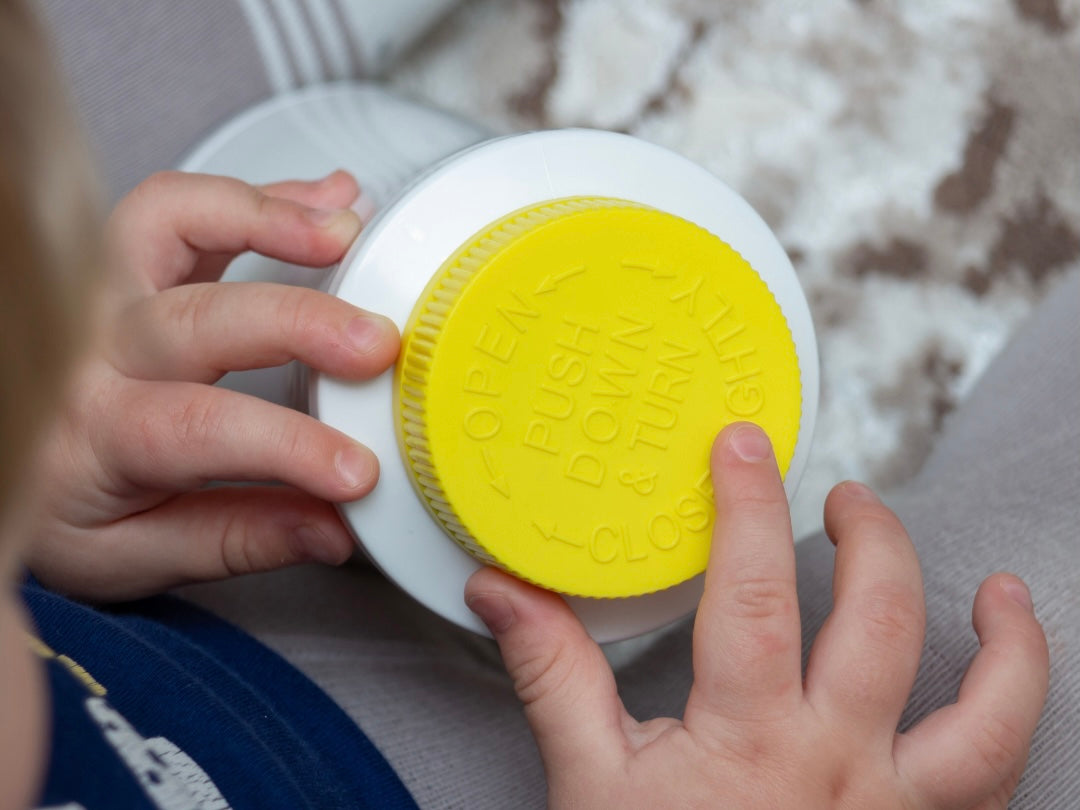8 Tips to Prevent Accidental Ingestions

By: Madhuri Davé, DO
Kids, especially toddlers, are always on the move! Exploring, exploring and oh yes, more exploring! Toddlers from one to four-years-old developmentally explore the world with constant hand-to-mouth motions. Unfortunately, dangerous substances can sometimes get into their systems through those motions, explorations and experimentations - and it can happen easier than you may imagine.
Poison Control Centers in the United States receive 1.2 million calls each year as a result of the accidental poisoning of children ages 5 and younger. Nearly 90% of these toxic exposures happen at home and 60% involve non-pharmaceutical products such as cleaners, personal care products, pesticides, cosmetics, art supplies, toys and alcohol.
As a mom to a toddler and a newborn, I know how important it is to all of us to keep our kids safe. Here are a few tips to help prevent accidental ingestions
1. Keep toxic substances high and secure - lock them up and away
- The best place to keep medications or toxic products are in upper cabinets that cannot be opened by children. Placing a lock and making sure they are secure can also help keep children out. Don’t forget about toxic material in the garage and basements - often children find danger in places we do not expect them to explore.
2. Keep it original
- Keep medications and toxic products in their original packaging. You wouldn’t believe how many times accidental ingestion is caused by combining medications into one pill bottle or storing liquids in the wrong container. If your child does indeed ingest something, your doctor will want to know what it was if possible to help your child if he or she is sick.
3. Know the Poison Control number (open 24 hours/7 days a week)
- The nationwide Poison Control Centers’ phone number is 1-800-222-1222. It is one that should be easily accessible. Save it in your cell phone or have it taped to the fridge. Or go old school … and memorize it. If you think your kiddo has ingested a poisonous material and is awake and alert, call the poison center for help with next steps. If your child is not breathing or has collapsed, call 911 immediately.
4. Know what’s in your home
- It’s always good to know what medications are in your house – both prescriptions and over-the-counters.
5. Don’t Need it? Get rid of it.
- Clear out any potential toxic risks such as prescription drugs, over-the-counter medicine, vitamins or household cleaners. You can return them at National Prescription Drug Take Back Day events or local take back programs. You can also place unused pills or liquid into a bowl and fill with water to dissolve. Then add coffee grounds or kitty litter and seal mixture tightly in a bag to dispose in the trash.
6. Be mindful of the dangers of batteries
- These are personally my worst fears. Especially those round button batteries! Ingestion of these can cause serious damage to the esophagus when swallowed and can be fatal. Make sure to store these away and check if items that have batteries in them are securely tightened.
7. Don’t refer to medicine or vitamins as candy
- Getting children to take medication when needed can be a daunting task. However, try not to associate the medication with “yummy yummy” or pretend that it is candy. Most adult medications are small pills that are colorful which can lead kids to mistakenly eat them as treats.
8. Grandparents and relatives need a reminder!
- Older adults can have medicines that are very dangerous to kids and their homes may not be as childproofed as yours. It’s worth a quick and kind reminder to have things out of reach!
Just as our kids grow into new shoes, clothes and toys, they also have new ways of getting into things that we once thought were tucked away safely. Continue to be mindful and re-evaluate often to make sure we didn’t accidently leave that bottle of vitamins on the counter, laundry detergent on the floor or the bag of buttons for crafts laying around!
Kids love to explore and put things in their mouths - it’s actually developmentally appropriate! What we can do as caregivers as our little ones embark on their journeys can help protect them on those adventures. As I’m writing this... I’ve been looking around my house and realize there are still lots of improvements I can make to keep things out of my toddler’s reach.
So take a look today and see if there are any things you can improve on in your own home! You’ve got this!

Madhuri Gavva Davé, DO, is a Pediatric Emergency Medicine Fellow. In her spare time, she loves hanging out with her awesome husband and two sons! You can find them exploring outdoors, drawing pictures and making cookies & smoothies. Madhuri trained all over the Midwest, but says she is happy to be back home in Indiana and close to her entire family!
RESOURCES:
National Prescription Drug Take Back
Poison Control online help line
RELATED BLOGS:
The Food Journey: Starting Solids
Choking hazards: When to introduce certain foods to children
Introducing peanuts: what you need to know
11 Ways to Get Your Picky Eater to Enjoy New Foods
8 Tips to Prevent Accidental Ingestions
3 Ways to Eat the Rainbow & Make Meals Fun
6 Ways to Decrease Your Family's Exposure to Harmful Chemicals
- Tags: Children's Safety
0 comments



